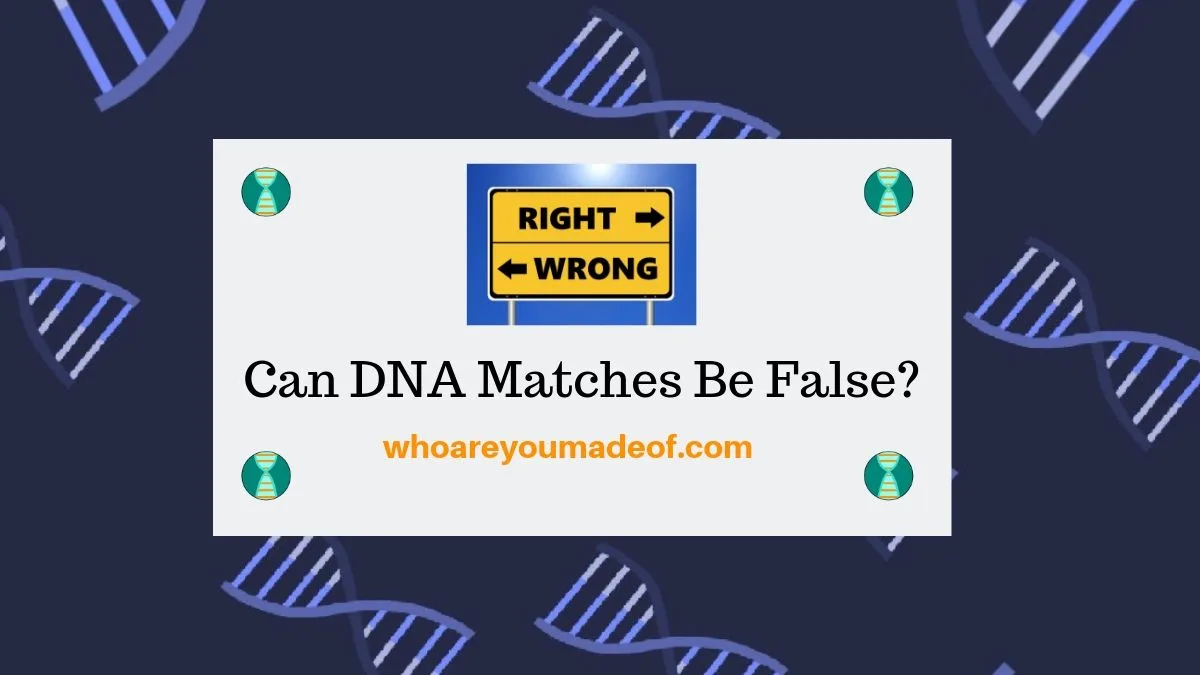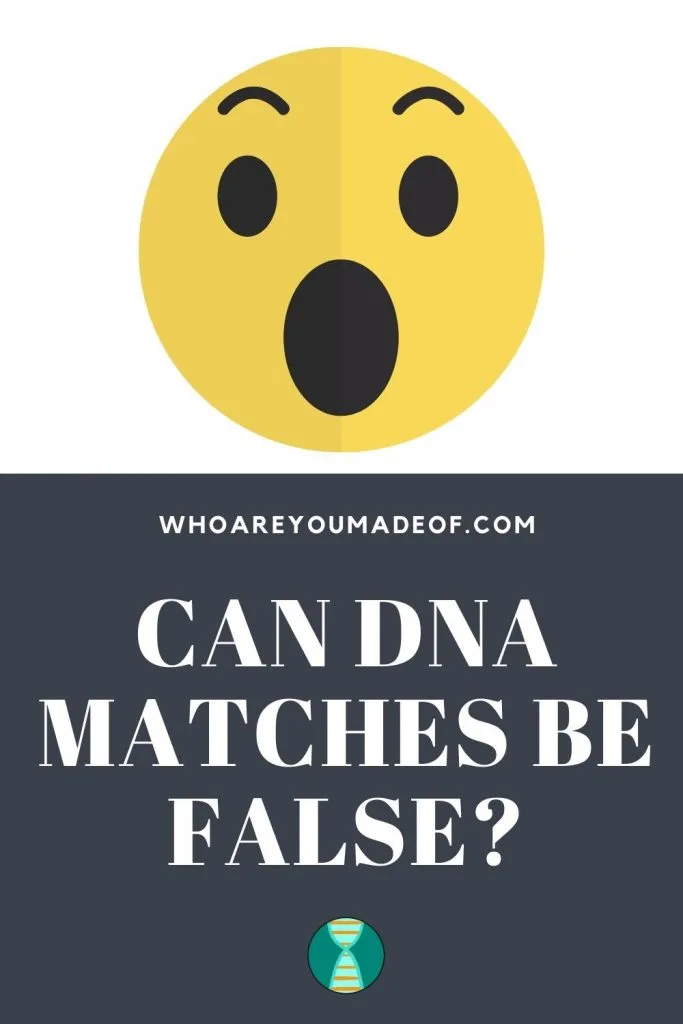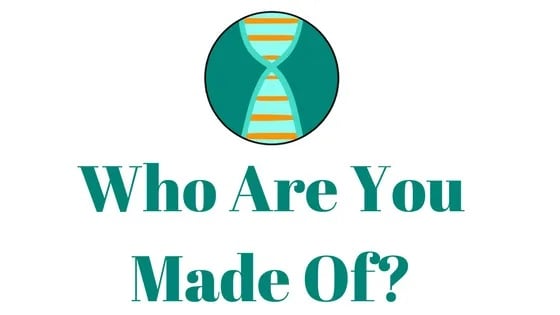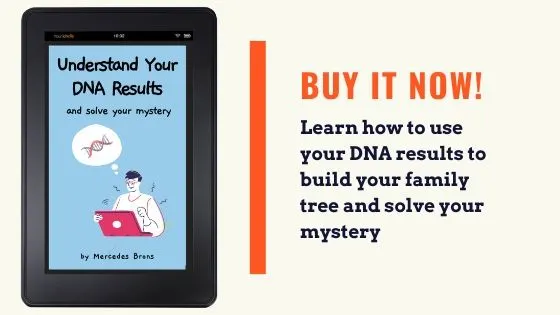Are you wondering if DNA matches can be false? What is the probability that your DNA match is false? In this post, I'll answer these questions - and more!
Questions addressed in this article include:
- Can DNA matches be wrong?
- Are close DNA matches ever wrong?
- What are the odds that a DNA match is false?
- Which company has the most accurate DNA matches?

It's important to know whether a DNA match is false. Have you ever spent hours trying to figure out how you are related to a distant DNA match, only to eventually figure out that you probably are not really even related?
I have, and I want to save you some time.
Can DNA matches be wrong?
Yes, it is possible for distant DNA matches to be false. It is most common to have false DNA matches that share a single segment that is smaller than 10 centimorgans (cMs) in length.
It is important to note that a legitimate DNA match can also appear to be false based on not finding genealogical evidence of a connection.
DNA segments can get passed down for many, many generations. Many times, we might be related to DNA matches that appear to be false, but neither person has a family tree that is complete (or accurate) enough to be able to provide definitive proof that there is (or is not) a connection.
Or maybe you are related, but the link is maybe 16 generations back in your family tree - too far back to ever find the common ancestor.
If you have a false DNA match, it does not mean that the testing company made a mistake. Instead, the DNA that you share with your DNA match is "coincidentally" identical.
The technical term for coincidentally identical DNA segments is identical-by-state. These segments are different than DNA segments that are identical because of common descent (identical-by-descent).
False positive DNA matches: What are the odds?
As I mentioned before, the odds that a DNA match is a false match increases with smaller DNA segments. This means that there is a low probability, or even almost zero probability, that larger segments are false.
For example:
- Segments over 15% have a 0% chance of being false (i.e. not inherited from mother or father)
Most segments between 10-15 cM are legitimate segments, inherited from a common ancestor. However, this common ancestor may be too far back to identify.
With smaller segments, we can see the odds of the match being false increase dramatically:
- Segments under 10 cM have about a 15% chance of being false (i.e. not inherited from mother or father)
- Segments under 5 cM have about an 85% chance of being false
Most experts in the genetic genealogy field recommend only focusing serious research on matches that share at least one segment that is larger than 10 cM in length. Just about every person who has done a DNA test should have many matches that match at this threshold, which should provide sufficient work and entertainment.
Close DNA matches are never false
I'm going to make a pretty bold statement:
Close DNA matches are basically never false.
DNA matches that are estimated to be related to us at a third cousin level or closer are most definitely related to us in some way. DNA testing companies use the amount of shared DNA that we have with our matches in order to estimate our relationship with our match.
You can use information like your family tree along with shared DNA to figure out the most likely connection with your match. This post can help you understand shared centimorgans and how to learn how you are related to your DNA matches:
The only exception to my "bold" general statement applies to people with substantial ancestry from endogamous populations, like Native American, French-Canadian, or Ashkenazi Jewish. DNA matches that fall into this category are not "false" matches, but are likely much more distantly related to you than is estimated.
If you think this might be the case with your "close" DNA matches, you can read this post:
How to know if you have false DNA matches
Have you ever heard someone say that it is impossible to prove a negative?
When it comes to DNA segments, it is very difficult to "prove" beyond doubt that there is no common ancestor at some point in history shared between two individuals.
Since when we talk about false DNA matches, we are referring to people who share only one or two very small DNA segments with us, it is unlikely that we can ever find compelling evidence to show that it is impossible that we are related.
Additionally, many of these smaller segments are impossible to trace. This means we cannot find compelling positive evidence of a connection.
How many of us have accurate, DNA verified family trees that go back 15-20 generations on all lines? No one has a tree like this, because it is not possible to verify DNA going back this many generations.
Which company has the most accurate DNA matches?
One of the most common questions that I receive in my inbox is whether it is possible to have false matches on Ancestry DNA. Others inquire as to which company provides the most accurate DNA matches.
The odds of finding false positive matches is just about the same on any DNA testing website. I think I get more e-mails about Ancestry DNA only because it's the most popular DNA testing company.
This means that Ancestry DNA matches are just as accurate as matches that you will find on My Heritage, and vice versa. You will not get more accurate matches on 23andMe than you will on Family Tree DNA.
The only slight difference that you will find across DNA testing companies is the "threshold" used to determine whether a person will show up on your list.
For example, some companies will only show you people who share with you segments that are longer than 10 cM. Other companies will show you people who only share 6 cM.
Still others might show you people who share as low as 4 cM with you as long as the total number of centimorgans shared reaches a different threshold.

Conclusion
I hope that this post has helped you understand more about false DNA matches, how common they are, and how to spot false DNA matches in your match list.
If you have any questions about something that you read in this post, or if you would like to share your own experience finding a false DNA match in your list, I would love for you to join us in the discussion below.
Thanks for stopping by today!


Js.
Tuesday 31st of December 2024
I think you might be positively incorrect i am none of those ethnicities you have labeled above the little mind games is getting old.
BTP
Monday 30th of December 2024
My father's family is white, but a few of my paternal DNA matches (4th cousins and 3rd cousins 1,2,3 times removed) are black. This is evidenced from their pictures as well as their ethnic regions. Considering that two ancestors had slaves, it is unlikely that these matches are in error. I am not proud of the fact that my ancestors had slaves and to think they took advantage of them in this way is even worse.
J.S.L.
Monday 30th of December 2024
So basically in my case it's better to forget about it and bury the hatchet and go on living my life because what i got out of what i reading.
Karolina
Tuesday 4th of June 2024
Hi Mercedes, this is interesting to read. I have an match with 14,4cM, 2 segments, longest 8,2cM that has both his parents tested and I do not match them while he matches them at around 50% both. That is a false match, am I right?
Ryan D
Monday 24th of April 2023
Is it possible that this match is identical by chance?
2 230767996 234702905 5.37 897 Half 10 69511110 73083467 6.03 1013 Half 10 130416520 133040379 8.28 826 Half
This person apparently doesn't match either of my parents, but we share three segments of over 5 cM in length.
What are the chances of that?